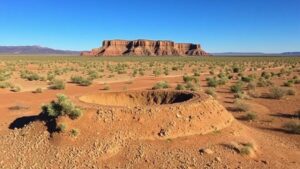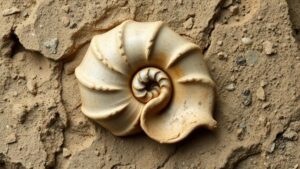The Secrets of Stone Forests: Fossilized Trees in Unique Geological Settings
The Secrets of Stone Forests: Fossilized Trees in Unique Geological Settings
Stone forests, often referred to as petrified forests, are extraordinary natural phenomena where ancient trees have undergone the process of fossilization. These geological wonders encapsulate millions of years of Earths history, providing invaluable insights into past ecosystems. For rockhounds and mineral collectors, exploring these unique geological settings is a fascinating endeavor, revealing both the beauty and complexity of petrified wood and its formation.
Understanding Petrification
Petrification, the process by which organic materials become fossilized, typically occurs in a few key stages. Initially, when trees die, they undergo burial in sediment, where decomposition is minimized. Over time, mineral-rich water permeates the tissues of the tree, replacing the organic materials with minerals, primarily silica, calcite, or pyrite. This process can take thousands to millions of years, resulting in fossilized wood that retains the intricate details of the original tree.
Geological Settings of Stone Forests
Stone forests are usually found in regions with specific geological conditions. Key environments include:
- Volcanic Areas: The silica-rich materials from volcanic ash can lead to rapid petrification, as seen in Petrified Forest National Park in Arizona, USA.
- Floodplains: Sediments deposited by ancient flooding events can bury trees quickly, allowing for effective petrification. Examples include the Ginkgo Petrified Forest in Argentina.
- Deserts: Arid climates can slow decomposition significantly, contributing to the preservation of wood, such as those found in the Petrified Forest of Lesvos in Greece.
The Science Behind Fossilized Woods
Petrified wood showcases remarkable scientific properties. Each piece can provide clues about the environment in which the tree lived. Key measurements that enthusiasts and scientists focus on include:
- Density: Petrified wood is significantly denser than its original form, often ranging from 1.5 to over 2.3 g/cm³, depending on the minerals infiltrating the wood.
- Coloration: The colors seen in petrified wood arise from various impurities in the mineralization process, with hues ranging from deep reds to vibrant blues.
Collecting Tips and Best Practices
For rockhounds and mineral collectors, discovering and collecting petrified wood can be an incredibly rewarding experience. Here are some practical tips for aspiring collectors:
- Research Locations: Identify legal and accessible areas known for petrified wood deposits. National parks and designated geological reserves often have regulations to consider.
- Use Proper Tools: Bring tools such as chisels, hammers, and safety goggles. For larger specimens, a rock saw may be beneficial.
- Document Your Finds: Keep a detailed record of each specimen, including its location, size, and any notable characteristics. This helps in understanding geological contexts.
Real-World Applications and Significance
Beyond mere aesthetics, petrified forests serve educational and ecological purposes. They are vital in understanding ancient climates and ecosystems. For example, the study of petrified trees can help scientists interpret historical climate changes and extinction events. Also, in industrial applications, some petrified woods are used for creating decorative items, jewelry, and even furniture.
Conclusion: The Allure of Stone Forests
Stone forests, with their mesmerizing beauty and rich scientific value, remain an enduring source of fascination for rockhounds and collectors alike. Each fossilized tree tells a story of an ancient world, preserved in stone. By understanding the processes of petrification, geological settings, and collection methods, enthusiasts can deepen their appreciation for these astonishing natural wonders. Whether youre in search of a stunning specimen for your collection or eager to explore geological history, the stone forests offer endless opportunities for discovery.



